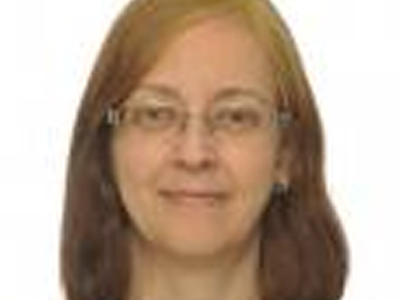
When U of T Dentistry Professor Dorothy McComb won an ITIF grant as she was planning to retire, she turned the reigns over to newly-arrived colleague Anuradha Prakki. The only instructions? “Make something interactive.”
Naturally, Prakki’s thoughts turned to the dental anatomy class for first-year students, which she had just begun teaching. The course is the first step of many to come for potential future dentists. It’s meant to teach new students the necessary background information and theory on what exactly is in the human mouth, where it is, and how it came to be there. It’s all pretty vital information. But despite its importance, the way it was usually taught had become tiresome.
“I don’t think students were accepting it because it was a lot of memorization,” Prakki says. “It’s boring.”
This made the class a perfect target for an interactive aspect. But in a familiar pattern for innovation in education, Prakki’s solution was to add something else: a real-life connection to the material.
“Of course they’re here becoming dentists, so they want to see how the information applies to them. After that, the understanding becomes easier—because memorization and understanding are two different things.”
So with her sights set on an interactive and “clinically important” learning tool to transform the course, Prakki went to the drawing board. With the ITIF funds, she procured x-rays, photos, and a human skull. She sat down with her lecture notes, colleagues, and a web developer. One and a half years later, the First-Year Dental Anatomy Program was ready.
Prakki organized the online tool like a textbook, with different information for different weeks throughout the anatomy portion of the semester. But it’s nothing like a normal textbook—it’s chock full of interactive and innovative features. The first that stand out are the color-coded links which provide students with key word definitions, or send them towards videos and animations.
One such video takes students through the development of the teeth in the mouth over time, from ages 3 to 21. Prakki was able to find real, yearly x-rays of one patient as he grew up, so students could see what kinds of development actually occur in a real-life situation that they’ll eventually need to deal with—not just the theoretical textbook scenario of what should happen. Of course, there’s a video of that textbook scenario for students to see as well.
“I don’t know anyone who made a video like this,” Prakki says. “It’s usually done in a series of pictures, in a book.”
Similarly, another video takes one of the driest parts of the class—examining different theories of tooth evolution—and makes it come to life, with animations transforming wrote diagrams and paragraphs of explanation into one easy-to-understand package.
Another popular feature is the photo series of case studies, which help put all of the information into a specific context.
“When we start showing this, this is what students like,” Prakki says. “They go, ‘Oh now I understand why this is important.'”
But the real showstopper is the 3D Tooth Atlas. After using that human skull to get a CT scan of all the teeth, Prakki and her team were able to create an impressively interactive map of the mouth for their students. All the important structures on each tooth are labeled with explanations, which can be easily toggled off for study purposes. Students can zoom in and out, rotate the view, and even click to reveal only certain layers of the teeth at one time. This ability—to see not only inside the mouth, but inside each tooth—is invaluable. Not only is it interactive, but it’s clinically important, as promised: anyone treating a cavity needs an intimate knowledge of all the varying parts of each tooth.
Prakki says it’s fairly common for her former students come back and want to use the tool, even in their second or fourth years of study.
“They really enjoy it. They keep saying, ‘Dr. Prakki, this is amazing.'”
And Prakki feels the same way—about her students, that is. She hands out a questionnaire after each semester, looking for their ideas on improvements. That has resulted in clearer videos, along with the end-of-chapter quizzes that make the program an even better study tool.
Prakki has plans to submit a paper on the 3D tooth atlas, in order to make it more available as a teaching tool, and get more funding to improve on it. She has great ideas for further development, and ideally, it would be available for students to look at anywhere, via phone app. But there’s another reason she wants to get the word of her project out there.
“I tell my students, if you don’t publish your research, it never happened,” Prakki says. “It’s the same with this.”

